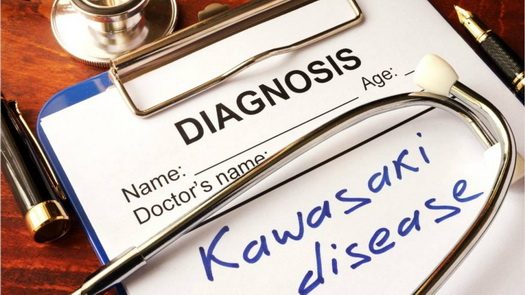
Kawasaki Disease: What You Need To Know
As the COVID-19 pandemic appears to be behind us, or at least the first wave, a new threat from the virus has emerged. Kawasaki Disease suddenly appeared in children following infection by COVID-19 just a few weeks ago, and the fear of complications has stalled efforts to return to normal life.
So what is Kawasaki Disease? How dangerous is it? and should we be worried for our children?
What is Kawasaki Disease?
Kawasaki disease, also known as Kawasaki Syndrome, is an illness found in children that causes inflammation (swelling and redness) in blood vessels throughout the body. The condition, which is not believed to be contagious, most often affects children under the age of five, and tends to occur following a viral infection.
The disease was first discovered in Japan by Tomisaku Kawasaki in 1967, and the first cases outside of Japan were reported in Hawaii in 1976.
Following the recent COVID-19 outbreak, multiple children were reported to have fallen ill with a Kawasaki like illness. Despite some contention if it was a new version of Kawasaki or Kawasaki itself, the symptoms and treatment have remained the same.
The CDC reports that the number of Kawasaki Disease cases in the United States range from about 9 to 20 per 100,000 children under 5 years of age.
Symptoms of Kawasaki Disease
Kawasaki Disease shows its symptoms in two phases.
Phase 1: The first phase, which can last for up to 2 weeks, includes a high fever that lasts at least five days. Other symptoms can include slightly red eyes, a pink rash on the back, belly, arms, legs, and genital area, red, dry, cracked lips, a “strawberry” tongue (white coating with red bumps on the tongue), a sore throat, swollen palms of the hands and soles of the feet with a purple-red color, and swollen lymph glands in the neck.
Phase 2: The second phase usually begins two weeks after the onset of fever, and includes peeling skin on the hands and feet, joint pain, diarrhea, vomiting, and belly pain.
Doctors can use a blood test to find high “inflammatory markers,” which is the definitive sign for the diagnosis of Kawasaki.
Treatment of Kawasaki Disease
Doctors treat Kawasaki Disease through intravenous doses of immune globulin (IVIG) antibodies that help fight the infection. High-dose aspirin is also given by mouth to treat inflammation.
Soon after treatment, the symptoms begin to dissipate.
Complications of Kawasaki Disease
Most cases of Kawasaki are caught early in the diseases cycle. When treated early, Kawasaki disease rarely cause any long term effects, but if the condition isn’t found until later, patients can have serious complications that affect the heart.
These complications include an aneurysm (a bulge in the wall) of the coronary arteries, arrhythmias, which are changes in the normal pattern of the heartbeat, and problems with some heart valves.
Should We Be Worried?
While it is always good to be cautious when it comes to health related issues, due to a new virus rapidly spreading across the population, the spike in Kawasaki cases is to be expected. It is also a well documented and treatable disease, meaning that there is an established treatment plan that works effectively.
While the spike in cases does mean more children in number are getting the disease, the numbers are not overwhelming, with just a few children getting it per many hundreds of thousands.
This information has been taken from the CDC website as well as medical professionals. This information does not negate the need to visit a Doctor. At the first sign of symptoms, visit your primary care physician for case specific instructions.












